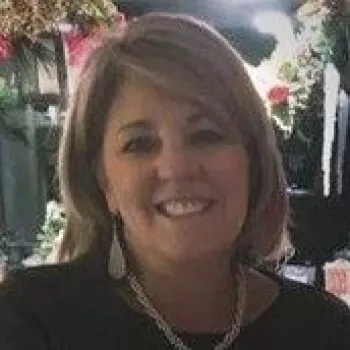
Improvement Opportunities Identified from Breast Programs in the United States


In partnership with the National Consortium of Breast Centers (NCBC), Leica Biosystems’ Process & Solution Optimization team worked with several hospitals with the goal to improve the quality and efficiencies of their breast programs. Through this work, the team identified common barriers and improvement opportunities.
Method
Leica Biosystems’ team of clinical and process experts spent several days at each breast center. Prior to the visit, breast program data and minutes from the leadership committee meeting were reviewed. Breast Care Team sponsors were identified, and teleconferences were conducted to gather information on the areas of concern. During the site visit, the team attended a breast conference, a breast program leadership committee (BPLC) meeting, and a cancer committee meeting. Process observations occurred from the time the patient entered the imaging suite, until the time their diagnosis and treatment plan were ready for delivery in the imaging center and pathology lab. Meetings were conducted with support staff including tumor registrars, nurse navigators, administrators and the breast surgeon.
Results
The common barriers and improvement opportunities were identified:
Barrier #1: Lack of timely data to drive breast care coordination and prioritization
Opportunity:
- Education on the input of data and use of the NCBC’s National Quality Measures of Breast Centers’ database to deliver reports on performance and peer comparison data.
- Recommendation to share data at the BPLC level to drive quality improvement initiatives.
Barrier #2: Inefficiencies in patient scheduling and prior authorizations
Opportunity:
Conduct a cross-departmental process flow mapping session to identify where inefficiencies are occurring and brainstorm solutions. (i.e.: a standardized work process, setting priorities, and a look at centralized vs. decentralized scheduling.
Barrier #3: Lack of common goal deployment across departments
Opportunity:
Initiate interdepartmental communications and emphasize the importance of interdepartmental task interdependence.
Barrier #4: Outmigration
Opportunity:
- Complete a community image assessment to drive program promotion and brand awareness.
- Track patient reasons for outmigration and address opportunities
- Take advantage of benchmark data and all accreditations in marketing materials
Conclusion
Our hypothesis is that the combination of clinical expertise paired with industry expertise in process improvement can create and analyze data to drive deeper conversations around provision of high quality patient care. Inclusion of lean principles and national benchmarks for quality can result in improved efficiencies for the breast center ideally leading to better patient outcomes.
Projections and Realized Results are specific to the institution where they were obtained and may not reflect the results achievable at other institutions.
Want to see how the Leica Process and Solutions Optimization team can help improve your lab's workflow?
발표자 소개

Rhondalyn Bomkamp, is an accomplished Director/Nurse Leader with a proven track record of effectively managing complex projects and health system performance improvement initiatives. As a registered nurse, she has experience in Quality and Patient Safety and Project Management/Development in the oncology, cardiac and intensive care arenas. She has strong clinical knowledge and management experience with the ability to recognize opportunities for improvement, coordinate the work of many areas and develop collaborative relationships with diverse groups to facilitate the implementation of change.

Kimberly Byrwa-Neff is a registered nurse with a background in both clinical nursing and in evidence generation in industry. Her clinical expertise lies in cardiology and oncology, specifically breast cancer. As a nurse, black belt in process excellence, daughter of a breast cancer patient, and survivor of breast cancer herself she brings the full patient experience to her work to improve care for breast cancer patients. Kimberly has authored numerous papers and presented improvement in clinical outcomes as a result of working with breast teams across the country.
Related Content
Leica Biosystems 콘텐츠는 Leica Biosystems 웹사이트 이용 약관의 적용을 받으며, 이용 약관은 다음에서 확인할 수 있습니다. 법적고지. 라이카 바이오시스템즈 웨비나, 교육 프레젠테이션 및 관련 자료는 특별 주제 관련 일반 정보를 제공하지만 의료, 규정 또는 법률 상담으로 제공되지 않으며 해석되어서는 안 됩니다. 관점과 의견은 발표자/저자의 개인 관점과 의견이며 라이카 바이오시스템즈, 그 직원 또는 대행사의 관점이나 의견을 나타내거나 반영하지 않습니다. 제3자 자원 또는 콘텐츠에 대한 액세스를 제공하는 콘텐츠에 포함된 모든 링크는 오직 편의를 위해 제공됩니다.
모든 제품 사용에 다양한 제품 및 장치의 제품 정보 가이드, 부속 문서 및 작동 설명서를 참조해야 합니다.
Copyright © 2025 Leica Biosystems division of Leica Microsystems, Inc. and its Leica Biosystems affiliates. All rights reserved. LEICA and the Leica Logo are registered trademarks of Leica Microsystems IR GmbH.
